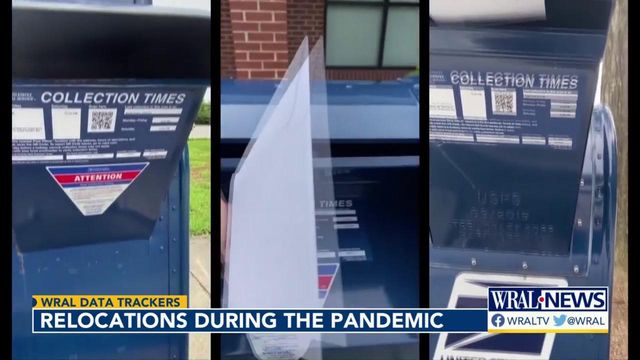In quest for space, more people moved to the Triangle in 2020 than the year before
Last March, as masks went up and cities locked down, people began contemplating their living situations.
Posted — UpdatedLast March, as masks went up and cities locked down, people began contemplating their living situations.
Kayla Inserra, from Cary, was living in New York City, in a one-bedroom apartment with her husband, Thomas, also from North Carolina, when the first cases of COVID-19 were reported.
"Our building had beautiful outdoor space. It has a rooftop. It has a 12-floor terrace," said Inserra. "That was part of the reason why we moved in. But in COVID, everything, all of the public spaces, were completely shut down. So we really were confined to our apartment and going for walks in the neighborhood."
After months locked inside, she and her husband looked to head home to North Carolina.
"We booked a one-way ticket thinking we would be staying there a month, max, because of the quarantine," Inserra told WRAL News. "But we ended up staying through September."
Inserra wasn't alone. In fact, she had a few friends who came back to North Carolina from the Big Apple.
"Our analysis of address changes (move-outs to move-in) relies on the number of net move-in normalized for population in each locality," the CBRE report explains. "We then compared 2020 net move-in volume to 2019 volume to isolate the unique impact that COVID-19 is having on migration."
The data shows there was a 23% increase from 2019 to 2020 in the number of people moving from the New York City area to Raleigh-Cary. Fayetteville experienced the same influx from NYC while it was higher - 32% - in Durham-Chapel Hill.
New York ranks third among place people left to relocate to the Triangle. About 30% of those who moved to Raleigh and Cary came from Rocky Mount; Los Angeles (26.5%), Durham-Chapel Hill (21.4%) and Philadelphia (20%) round out the top five.
The data shows, most often, it was people like Inserra – young adults without children who have the ability to work remotely – who made a move during the pandemic.
People leaving high-cost, dense areas is something cities have been contending with for a while, but the mass migration and magnitude of that trend during 2020 is notable.
In total, there was a 2.8% increase in people who changed their addresses last year versus in 2019.
While changing addresses from these areas was the norm, people didn’t go too far. For those who had an address originally in Wake County, the majority who moved stayed stayed within 100 miles.
Inserra falls within that category, actually. She wound up going back to New York but only briefly. While she and her husband chose to leave the city for good and considered moving home, they ultimately settled on a home in Samford, Conn., a decision she says was accelerated due to the pandemic.
"I thought you'd be dragging me, screaming, out of city," Inserra said. "To be honest, I thought I was a city girl forever. But one thing that COVID has taught us is that outdoor space and personal outdoor space is really nice."
It seems space was something many people were looking for. The data shows downtown Raleigh lost about 2 people out of every 1,000 living in the city. Semi-rural areas saw the most growth, gaining about 6 new residents per 1,000.
The USPS data shows a significant increase in relocations during the beginning of the second quarter of the year. Researchers with CBRE note the data suggests moves in the last quarter of the year, when Inserra and her husband bought their house, were planned and not "a knee-jerk pandemic response" since moves and relocations slowed then but only slightly.
Related Topics
• Credits
Copyright 2024 by Capitol Broadcasting Company. All rights reserved. This material may not be published, broadcast, rewritten or redistributed.






